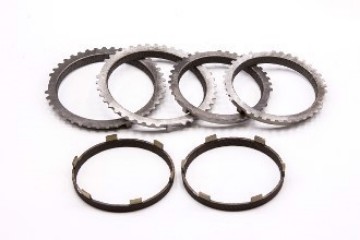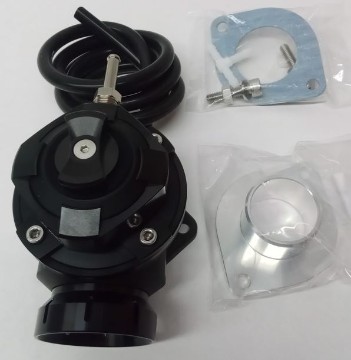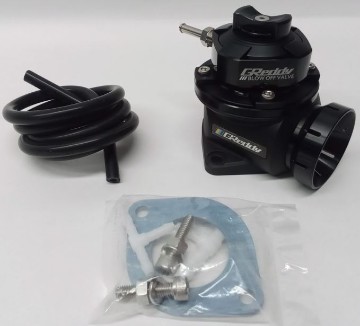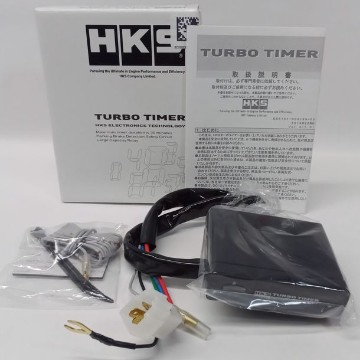Tech - Automatic to Manual Transmission Conversion
Auto to Manual Trans Swap
Writeup Courtesy of Steve Chepurny
Introduction: Why?
Before considering doing this, you must first realize that this isn't a simple afternoon project. For some they can do this in a weekend, for others it can take months.
There are different reasons you may want to convert to a manual, some just prefer the feel of driving a stick so much better than an auto. Others are unhappy with the performance of the automatic, which is caused by different things. This is an even bigger concern for those that intend to race their car.
Drivetrain loss is higher with an automatic than a standard. For every extra HP that you add to the drivetrain, you will always lose a certain percentage more of it than if you had a standard transmission. Another big problem is acceleration. The automatic for 3s cars was designed with driving comfort in mind. This mean that the shift points that the car uses are not the optimal ones for the driver with maximum acceleration in mind. A driver wants a transmission to shift at, or above redline when he's accelerating fast. Another minor reason to consider is that switching from an automatic to a manual will produce about 100 lbs in weight savings, since the automatic and torque converter take up that extra weight.
Stage 1: Planning
The first thing that you need to think about is how much you hope to spend on this project. If you want to do it for the bare bones minimum price, you will want to get most of the parts used. Especially the more pricey ones like the transmission, flywheel, clutch master cylinder, clutch, drivers side halfshaft, clutch and brake pedal assembly and shifter. If you get all of these parts used, the rest of the parts can be had for around $100 new. The cheapest you could normally hope to get most of the parts would be around $1000, however some have done it for less. The average price of the conversion parts using a mix of used and new ones is usually closer to $1500-$1800. If money is not a big issue though, I would highly recommend getting certain parts new such as the clutch master cylinder, and all lines. You may wish to even used upgraded parts for a higher price rather than stock ones since you have to buy the part anyways. There are many better than stock clutches available that are cheaper than buying a new stock one from the dealership. Ebay is sometimes a good place to find these.
The following are some upgraded parts that you may wish to use while doing the conversion: upgraded clutch, limited slip differential (LSD), lightweight aluminum flywheel, and short shifter. If you intend on adding a lot more power to your car in the future you should probably go with an upgraded clutch if you can afford one. An LSD is a also a good choice, but an expensive one (around $1000). These will greatly reduce wheel hop after the conversion. One big difference that you will find with the car after the conversion is that you will sometimes get wheel hop on fast launches, that's because more torque can be supplied to the wheels due to the clutch. The LSD is also a much stronger differential than the stock one, which is notorious for breaking during aggressive launches while drag racing or street racing.
One of the most important things to consider is if you plan on doing this project yourself, or hire a mechanic. That is something to leave up to your own judgment to whether you have both the time, inclination, and ability to do this yourself. There are many places and individuals that would do this conversion for you if you supply the parts for between $500-$1000. The 3si board is a good place to find someone for this. If you decide to do this all yourself, I'd say that its almost mandatory that you either have a shop manual for your car, or the manual backup CD that includes all of the manuals for 3s cars.
Timing is an import factor to some, especially if you plan on hiring someone to do the conversion. Some individuals have done the conversion in a weekend, but most shops required 2-3 weeks to do the conversion since they cannot devote the full time to working on just your car. If you are going to be without a car for a few weeks, make sure you have a backup car. If you need a backup car, a good strategy is to get this done while your brother, sister, or parents are on vacation and have an extra car kicking around at home. Anyways, most that have done this conversion take between 16-24 hours of total labor.
Stage 2: Parts gathering
You may wish to take your time accumulating the parts that you need over a long period of time. This is most definitely the most cost effective method of gathering parts. Sometimes on rare occasion, you can find deals where someone is practically giving away their transmission and that can be great for keeping your total cost of the project down. The most important thing to consider though before you start gathering parts, is choosing the best year of parts to match your car.
1991-92 models
If car is 91-92, you can use a 91-92 tranny. A 93-99 tranny can be used, but you will need to replace the axles with the 93-99 specification axles.
1993-99 models
You can use a 91-92 tranny, but you would need to replace the axles in the car with older ones. Another issue is that a 93 tranny uses the newer axles, but uses a mechanical speedometer, while the 94-99 speedometer works from an electronic speed sending unit.
The speed sending unit can be swapped from a 94-99 to the 93 tranny, but some custom shimming will need to be done to hold it in properly. To do this, remove the speedometer gear from the mechanical speed sending unit, the put it in the "speed sender sleeve" from a 94-99 5-speed tranny. The wiring harness that the auto tranny used will fit right on.
Additional considerations
If you intend to install a Quaife Limited Slip Differential (LSD) in the future, you should really go with a 93-99 tranny. This is because the Quaife LSD only works with the newer (93-99) axles. If you do intend to use a 1991-92 transmission, you will have to upgrade to 93-99 axles before you install the Quaife LSD.
You can use a 5-speed or 6-speed AWD transmission from a twin-turbo Stealth, or a 3000GT VR4 on your FWD car. This has been done by at least one person with success. Some modification is required to do this (welding the driveshaft) but it would be well worth it. The advantages of this are twofold, the transmission is designed to handle more power than the non-turbo transmissions, and the gearing is also much better if you intend to upgrade your engine dramatically such as turbocharging or supercharging.
Stage 3: Doing the conversion
First, double check that you have all of the correct parts. Its very easy to end up with the wrong parts if you buy them used..
Second, inspect the tranny, ensure that it has no cracks or leaks.
Pedal assembly
Completely remove the battery from the car before starting this project, it will have to be removed anyways when it's time to take the transmission out (to get to the mounting bracket bolt). Remove the kick panel under the steering wheel as well as the plastic molding around the steering wheel (covers the ignition etc....). You will have to remove all the plastic molded heating vents and pipes that are under the steering wheel that may be in your way. Don't even bother trying to work around them, just remove them before you start. In most cases it's only 1 bolt holding the thing up and it's more than obvious how it goes back together. There's a joint for the steering shaft just before the firewall near the brake pedal. Turn the wheel until you can feel the bolt holding the joint together through the hole. Remove this bolt using a 12mm socket. The steering assembly is held up at 2 points, start at the back (closest to the firewall) and you'll see a silver mounting plate. Remove the 4 bolts using a 14mm socket. Next you will see a cable that is in a white plastic housing attached to the ignition switch. There are 4 small philips screws that you remove then the cable can be disconnected. You won't need this anymore, this was the safety switch that prevented the key from being removed when the car is in gear (for auto tranny only.....). There are 4 more bolts on both sides of the steering assembly that can now be removed using a 14mm socket. After these are removed the steering assembly should come out of the car after a little wiggling to free the steering shaft joint where you removed the bolt.
You can now start removing the cotter pin for the brake booster on the brake pedal assembly as well as all the wiring connectors. There are about 6 bolts holding the brake assembly to the car (see photos for location of bolts). Remove all the bolts but don't try to remove the assembly yet. You have to pry the brake booster away (remove the 1 bolt holding the fluid reserve so you can pull it out more) from the firewall as far as it can go. You won't damage the brake lines, there's enough play in them to take the movement. Stick something behind the booster to keep it away from the firewall. By now I'm sure your back is aching from lying under the dash but feel good about going back under, you're almost 25% done under there. You will have to remove the 2 bolts holding the set of relays up under the dash, they will be in the way and you don't want to damage the wiring. Just start trying to remove the pedals, it will take you about 15 minutes to figure out how to get those damn things out of the car. You WILL end up purposely bending the sheet metal under the dash that is the mounting point for the relays that you just moved. No big deal, don't bend it back yet though, the new pedals still have to go in and they are even more awkward! Before jamming the new brake/clutch pedal assembly in you'll notice a stamping on the firewall where the clutch master should go. This firewall is 2 layers thick and the stamping is only through the first layer. Do whatever you want to get through the second layer, short of removing the engine this must all be done from under the dash. I tried to get a sawsall, jigsaw, holesaw.....you name it.....under there with no success. In the end I used a 1/8" drill bit and followed the diameter of the hole drilling every 1/2 inch. I then took a nice long screw driver and pounded the %$@! out of the metal until the hole was there. Not as hard as it sounds.
Clutch master cylinder
Use a 3/8" drill bit for the clutch master bolt holes. Use the stamping in the firewall as a guide for there holes as well. At this point you can jam the new brake/clutch pedal assembly into place, bolt it up using the same bolt holes as the old assembly. Reconnect the brake sensor and the pins for the brake and clutch master. There, you can save your back and move on from under the dash.
Swapping the tranny
Next up is to swap the tranny. Even though the most exciting part is the shifter it's best to leave this till last since it's one of the simplest parts of the job but most important is that you can drill through the firewall for the shifter cables when the transmission is removed. Remove the intake piping along with the filter can. Make sure the tranny is drained before removing the driveshafts to prevent a big mess. Remove the 2 17mm drain nuts to drain the oil. Remove the axle nut cotter pin then the Axle nuts with a 32mm socket and breaker bar before jacking up the car. Next the driveshafts have to be removed. Remove the tire, the balljoint nut, the tie rod nut and separate these joints. The remove the 2 bolts that secure the hub to the strut assembly. The hub should be able to slide off the end of the driveshaft without resistance. With both hubs off the driveshafts can now be pried from the transmission using a crowbar or long slotted screwdriver. Remove the cover on the bottom of the engine that attaches to the transmission. There are 3 bolts that attach the flex plate to the torque converter which must be removed before unbolting the transmission. The bolts are 17mm and a pain to remove. I found the best way was a flex joint and a 3" extension on my breaker bar did the trick. (By the way, I keep referring to my breaker bar which is a Sears socket wrench with a 3' bar over the handle. Nothing special with any of my tools) You can rotate the flex plate by inserting a 1/2" socket in the crankshaft on the drivers side of the engine to get to the other bolts. Next detach all the wiring harnesses, the shifting cable and put a jack under the transmission. Remove the starter. The hardest bolt that attaches the transmission to the engine is a 12mm bolt located under the starter with the head of the bolt on the engine side screwing into the tranny. I could remove it pretty easily with the intake assembly out of the car. There are 3 other 14mm bolts but leave the lower front one in until the transmission mount has been separated. The transmission mount can be separated by one bolt (17mm socket) that holds the two pieces together. It isn't necessary to remove more than this one bolt because the new transmission can use the new mounting bracket. Remove the lower transmission to engine bolt and the transmission is now free from the engine. Easiest way to drop the transmission is with a jack underneath the transmission and slowly lower the jack. When the jack is as low as it can go you should be able to slide the jack from under the tranny then slide the tranny out from under the car. A few more steps to go and you're halfway there.......
Removing the flexplate: This is a simple task if you know how to do it....Use a 1/2" breaker bar attached to the pulley side of the engine and wedge it in so that the engine crankshaft won't turn. There are 6 19mm bolts (most years) that fasten the flex plate to the crankshaft. Use a breaker bar and be careful not to let the socket slip, you don't want to break or strip these bolts! They are grade 11 and impossible to drill out. After they are removed you don't need them anymore, the flywheel to crankshaft bolts are longer than the flexplate to crankshaft bolts. Remove all the spacers and bushings that were between the flexplate and the crankshaft. The new flywheel must be mounted directly to the crankshaft with NOTHING in between. The flywheel will rub on the inside of the tranny if you don't remove these pieces. Now may be a good time to do some preventative maintenance and replace the crankshaft seal (If you're quick you can do this without draining the engine oil, barely any will come out in the 5 minutes it takes to replace.)
Drilling out for Shifter cables: On the firewall you'll see an oval impression where there's no insulation. This is where the cables will come through. Go inside the car first and remove the automatic transmission computer that is up against the firewall so you don't drill through it, you won't need this anymore anyways. Drill, hack do what you have to to get the shape that is on the firewall so that the rubber grommet and cables will go through.
Installing the Flywheel and clutch: Give the crankshaft end a cleaning with a fine grit sandpaper then wipe clean. If you have access to compressed air then blow out the bolt holes in the engine where the transmission bolts up and the crankshaft bolts. Use loctite and bolt up the flywheel with the 6 flywheel to crankshaft bolts and tighten in steps. Use a torque wrench and finish tightening these bolts to about 100ft-lbs. Next install the friction plate and pressure plate. Use loctite on the pressure plate to flywheel bolts and finger tighten. Use a clutch alignment tool to align the friction plate to the center of the flywheel so that the transmission will line up when assembled. Tighten the pressure plate bolts in steps and finish off at 20ft-lbs. This may seem really light but it is the proper torque for a pressure plate. The loctite will keep everything in place. Remove the clutch alignment tool and you're now ready to install the transmission.
Installing the transmission: Lift, align, push in, bolt up. How you do this is up to you, I slid the thing under the car and just lifted it up while leaning into the engine bay and managed to get the thing on. Try to get a bolt in as soon as possible so all the weight isn't resting on the input shaft. Don't forget the 12mm bolt that goes at the bottom of the transmission right under the starter.
Install the drivers side half shaft (inner shaft of the axle). This is a real pain for some people but it will eventually fit.
Install the starter, transmission bracket, reconnect axles, hub assembly, tierods, balljoint nut and wheels. Everything is exactly the opposite of removal.
Shifter
Remove the center console. Remove the cotter pins that hold the 2 cables on the shifter in place as well as the 2 wiring harnesses. Remove the 4 bolts that hold down the auto tranny shifter and the shifter can now be removed from the car. You have 2 options of what to do with the old shifter cable. 1) remove the exhaust and heat shields so that you can undo the hold down bolts (real pain in the ass and not worth it to save the cable) 2) cut the cable from inside the car and pull it through from the engine bay. I opted for #2 then just jammed a bolt in the hole to seal things up. After the new shifter is bolted up run the cables through the hole you made in the firewall and attach them to the shifter. Use a couple new cotter pins to fasten the cables to the shifter. Attach the cables on the transmission as well making sure that the right shifter cable goes on the right transmission side and vice versa for the left side.
Micellaneous
Run a new line from clutch master to slave. Bend using a proper tubing bender if you can.
Attach the clutch slave, fill the clutch master and bleed the system.
Stage 4: Final steps
Bypassing the neutral/parking switch
This is required to trick the ignition into thinking the car is in neutral/park so that it will allow the starter to engage. You will need to splice two wires together. These should be soldered together, and wrapped in electrical tape. You should then use a tie wrap to attach the harness to somewhere, keeping it away from the shift mechanism on the tranny, and the hot parts of the engine.
1991-92 cars - You should have a rectangular wiring harness that used to plug into your auto tranny, but now has nowhere to plug in. It has 2 rows of 6 pins. The first row is numbered 1-6 and the second row 7-12. You will need to splice together the wires going into pins 8 and 9.
1993 cars - You should have a rectangular wiring harness that used to plug into your auto tranny, but now has nowhere to plug in. It has 2 rows of 6 pins. The first row is numbered 1-6 and the second row 7-12. You will need to splice together the wires going into pins 7 and 8.
1994-99 cars - You should have an oval shaped wiring harness that used to plug into your auto tranny, but now has nowhere to plug in. It has 3 rows of 4 pins. The first row is numbered 1-4, the second row 5-8, and the third row 9-12. You will need to splice together the wires going into pins 7 and 8.
Hooking up the reverse lights
In this case, you will need to get two pieces of wire, then solder one end on each of them to the reverse switch on the manual tranny. The reverse switch is the one on top of the tranny with two terminals. It's closest to the front of the car. If your lucky, your manual tranny may still have the harness attached, then all you have to do is solder to the wires on the harness instead.
1991-92 cars - You will need to attach the two wires from the reverse switch to the wires going into pins 10 and 11 on the rectangular harness mentioned in the previous section.
1993 cars - You will need to attach the two wires from the reverse switch to the wires going into pins 5 and 10 on the rectangular harness mentioned in the previous section.
1994-99 cars - You will need to attach the two wires from the reverse switch to the wires going into pins 5 and 6 on the oval harness mentioned in the previous section.
The auto tranny computer (TCU) can also be removed at this point
Appendix A: Parts list
Here is the basic list of parts that you'll need, with estimated cost:
Shifter assembly $50 (wrecking yard or 3si)
Shift boot $20 new (ebay)
Shifter cables and clips for cables $25-$100 (wrecking yard, 3si or new)
Brake and clutch pedal assembly $50-$75 (wrecking yard or 3si)
Clutch master cylinder $60 (new)
Clutch lines $25 (new)
Clutch, pressure plate, release bearing ($120-$500 new depending on quality)
Flywheel - $50-$75 (used + $20 for resurfacing)
Flywheel to crankshaft bolts $12
Clutch slave cylinder $40 (new)
5 speed Manual transmission $600-$1000 (depending on condition) or 5 or 6 speed AWD tranny with welded VCU ($1200-$1500)





